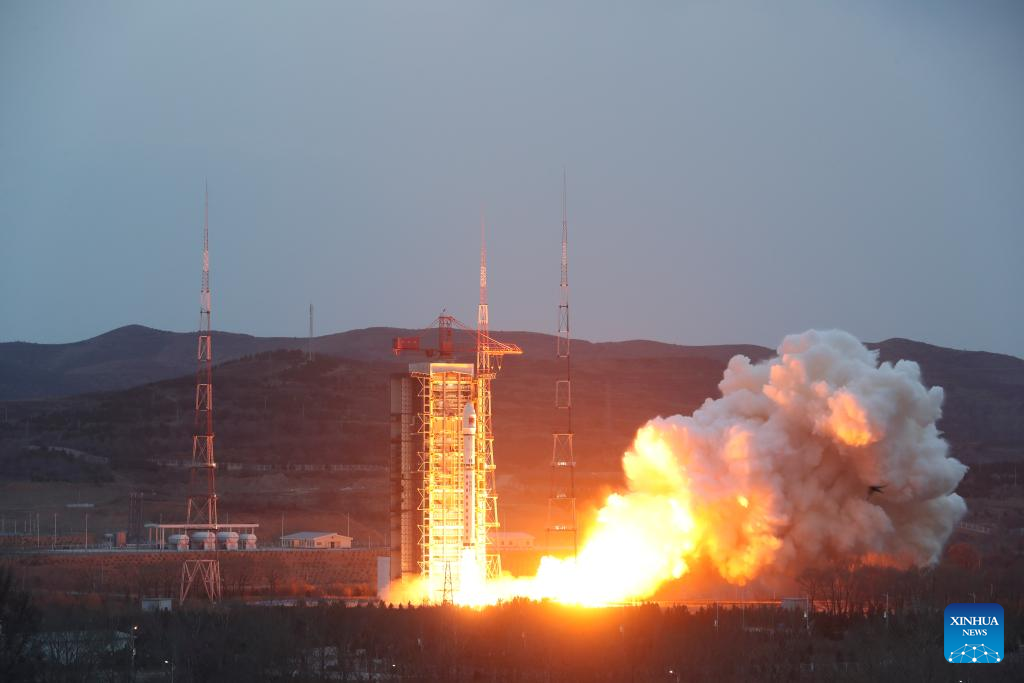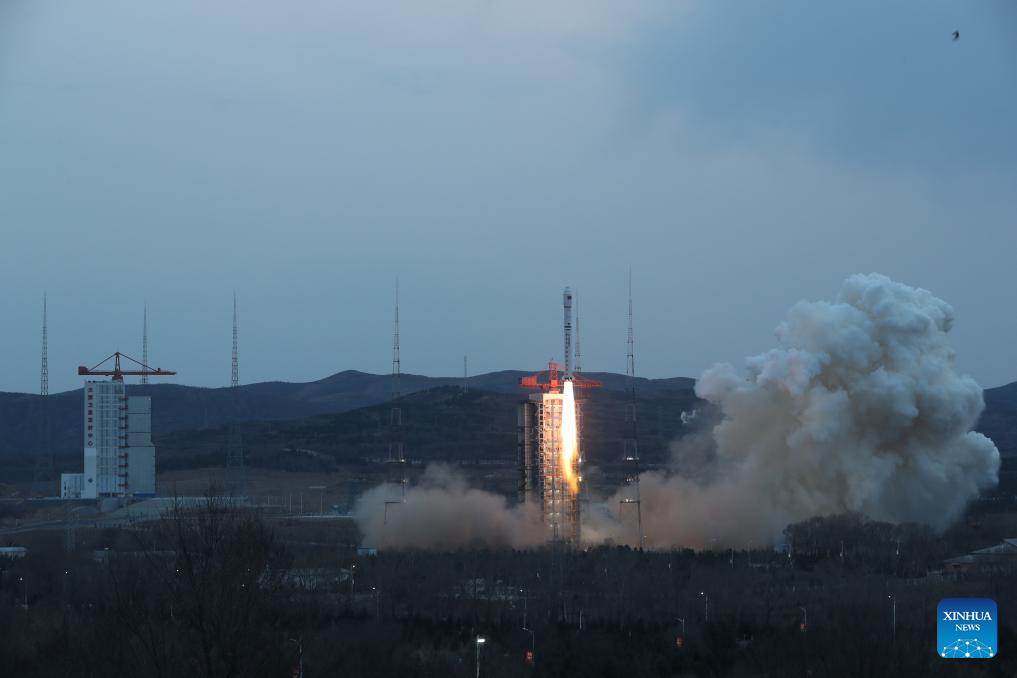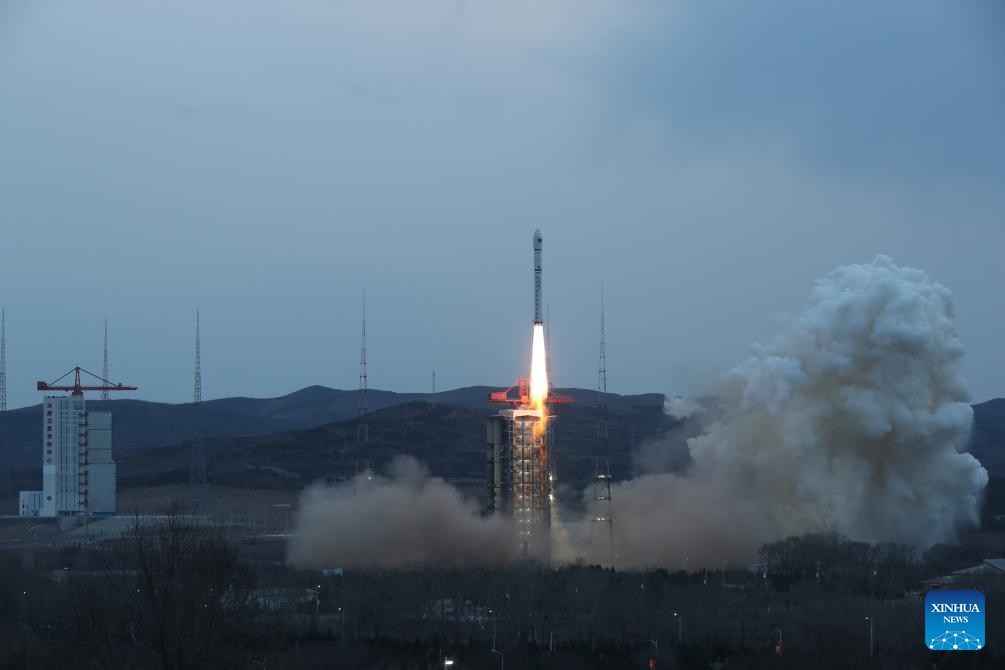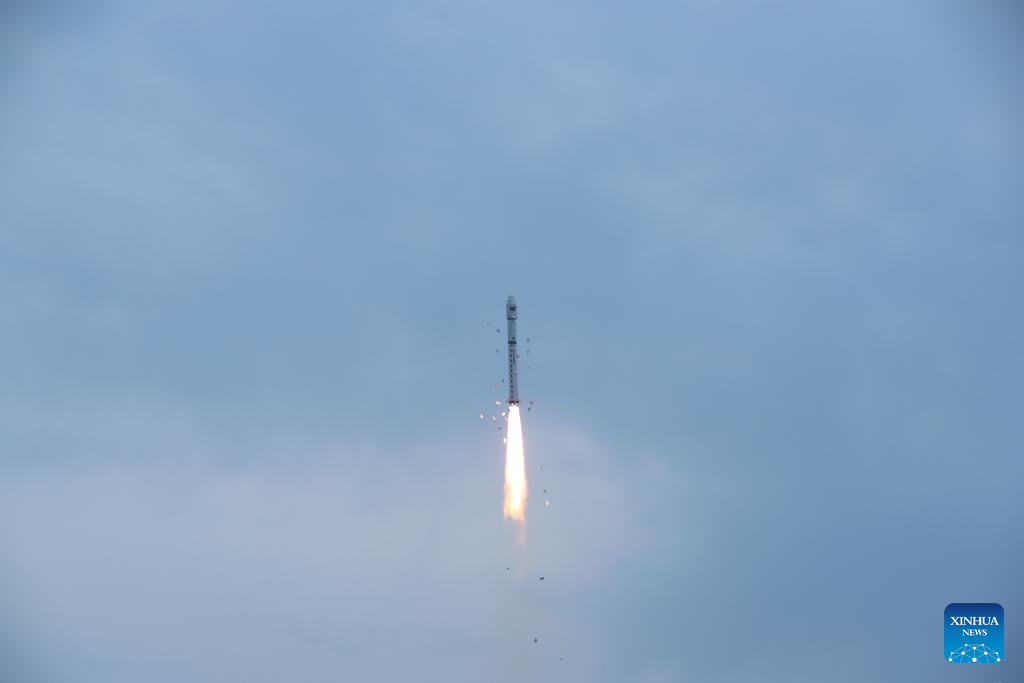A Long March-2D rocket carrying satellites of the PIESAT-1 constellation blasts off from the Taiyuan Satellite Launch Center in north China's Shanxi Province, March 30, 2023. China launched a Long March-2D carrier rocket on Thursday evening to place new remote-sensing satellites in space. The satellites of the PIESAT-1 constellation were lifted at 6:50 p.m. (Beijing Time) on Thursday from the Taiyuan Satellite Launch Center in northern China's Shanxi Province, and then entered the preset orbit. (Photo by Zheng Bin/Xinhua) TAIYUAN, March 30 (Xinhua) -- China launched a Long March-2D carrier rocket on Thursday evening to place new remote-sensing satellites in space. The satellites of the PIESAT-1 constellation were lifted at 6:50 p.m. (Beijing Time) on Thursday from the Taiyuan Satellite Launch Center in northern China's Shanxi Province, and then entered the preset orbit. They will mainly provide commercial remote-sensing data services. This mission was the 469th flight of the Long March carrier rockets. A Long March-2D rocket carrying satellites of the PIESAT-1 constellation blasts off from the Taiyuan Satellite Launch Center in north China's Shanxi Province, March 30, 2023. China launched a Long March-2D carrier rocket on Thursday evening to place new remote-sensing satellites in space. The satellites of the PIESAT-1 constellation were lifted at 6:50 p.m. (Beijing Time) on Thursday from the Taiyuan Satellite Launch Center in northern China's Shanxi Province, and then entered the preset orbit. (Photo by Zheng Bin/Xinhua) A Long March-2D rocket carrying satellites of the PIESAT-1 constellation blasts off from the Taiyuan Satellite Launch Center in north China's Shanxi Province, March 30, 2023. China launched a Long March-2D carrier rocket on Thursday evening to place new remote-sensing satellites in space. The satellites of the PIESAT-1 constellation were lifted at 6:50 p.m. (Beijing Time) on Thursday from the Taiyuan Satellite Launch Center in northern China's Shanxi Province, and then entered the preset orbit. (Photo by Zheng Bin/Xinhua) A Long March-2D rocket carrying satellites of the PIESAT-1 constellation blasts off from the Taiyuan Satellite Launch Center in north China's Shanxi Province, March 30, 2023. China launched a Long March-2D carrier rocket on Thursday evening to place new remote-sensing satellites in space. The satellites of the PIESAT-1 constellation were lifted at 6:50 p.m. (Beijing Time) on Thursday from the Taiyuan Satellite Launch Center in northern China's Shanxi Province, and then entered the preset orbit. (Photo by Zheng Bin/Xinhua)



China launches new remote-sensing satellites
Editor:谭婕倪
Source:Xinhua
Updated:2023-03-31 09:13:07
Source:Xinhua
Updated:2023-03-31 09:13:07
Special
Contact
Welcome to English Channel! Any suggestion, welcome.Tel:0731-82965627
lisl@rednet.cn
zhouqian@rednet.cn











